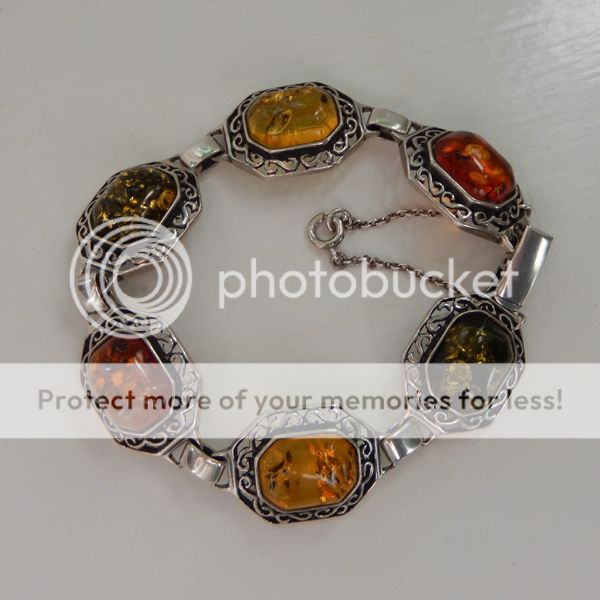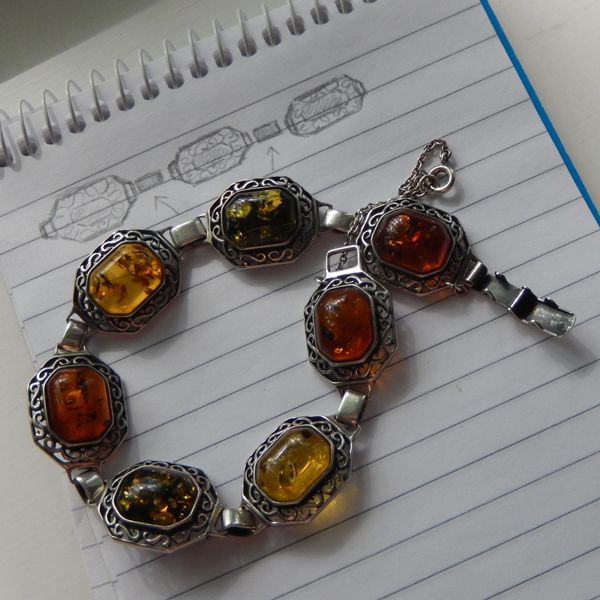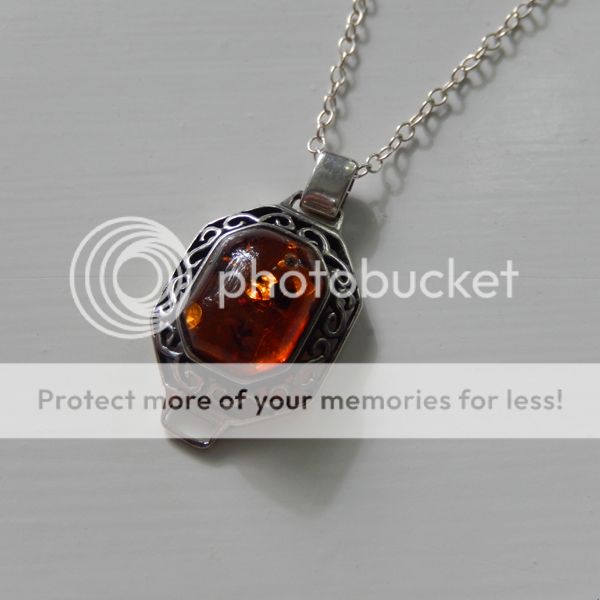
I was asked to adjust a bracelet that was so large that the owner, despite loving the piece, was just unable to wear it without fearing she'd lose it. I said I'd look at it but made it clear that if I didn't think I could do the adjustment safely then I wouldn't do it at all. Given the bracelet in question was set with stones, and amber ones at that (an incredibly soft stone as I mentioned in this post), I felt justified in my apprehension.
On being given the bracelet and sitting down with it, doing some thinking and doodling some ideas, I came to the conclusion that I was able to do what I was asked, and that was not only make the bracelet smaller but also make a pendant out of the stone-set link that I would be removing.
Despite my anxieties when I actually picked up my pliers and piercing saw I was surprised, and pleased, at how easy (relatively speaking) adjusting the bracelet and making the pendant turned out to be.
Audible sigh of relief.

My initial plan had been to cut through two of the connecting links, as shown in my illustration in the photo above, but on looking more closely I realised the clasp hadn't been soldered on and so I was able to prise it apart from the bracelet. I then cut through a connecting link and removed that and the stone-set link next to it. The clasp was then reattached to the bracelet which was now one silver connecting link and one amber stone-set link smaller.
When it came to making the pendant I decided against attempting to resolder the connecting link that had been cut through. A little research showed me it would probably be an error to trust to heat protecting compounds to protect amber from a soldering torch, and the general advice was that the best option in this situation is to remove the stone from its setting, perform the soldering, and then reset the stone. As I hadn't set the stone in the first place I did not want to do this, especially as, like I said earlier, amber is such a soft stone and could easily be damaged both in removing it from the setting and when putting it back in. The connecting link is made from thick, work-hardened silver and I felt confident that it would securely hold the pendant on the necklace.

I also decided against removing the extra 'loop' of silver that had connected the stone-set link when it when it was within the bracelet. This was mainly so that if the new size bracelet didn't fit (which was a concern as the stone-set links were quite large so the adjustment was kind of all or nothing) then it could be put back together again and a different option sought.
Despite my initial concerns at the request, I was pleased with how the adjustment went. And the owner of the jewellery? Well, the bracelet now fits perfectly and they have a matching pendant to boot.

The spare link looks great as a pendant! Lucky the connecting links weren't soldered :D
ReplyDeleteThanks for the comment! I was pleased with how the pendant turned out :)
Delete